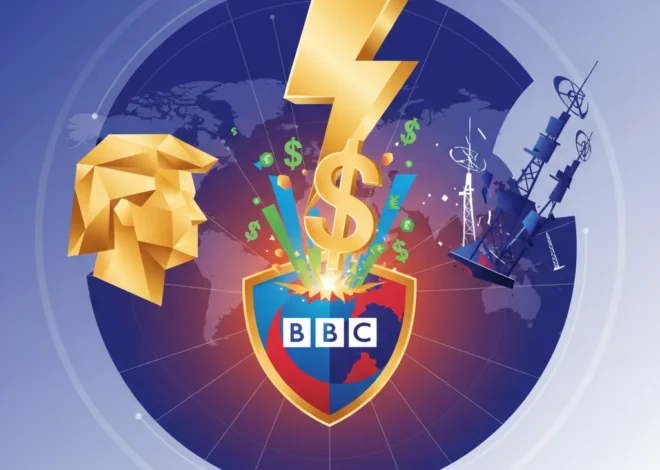
The $900 Million Chess Move: How the US and IMF Forged a Lifeline for Argentina’s Economic Revolution
In the high-stakes world of international finance, transactions are rarely just about the numbers. They are about signals, strategy, and political will. A recent, and highly unusual, maneuver by the United States has sent a powerful signal across the global economy. Washington drew $900 million from its own account at the International Monetary Fund (IMF), a move that coincided perfectly with a much-needed boost to Argentina’s dwindling foreign reserves. This wasn’t a coincidence; it was a calculated play to bolster the radical economic reforms of Argentina’s new president, Javier Milei.
This intricate financial operation, occurring just as an $800 million debt payment to private creditors loomed for Buenos Aires, highlights a critical juncture for the South American nation. For investors, economists, and business leaders, this event is more than a headline—it’s a case study in modern geopolitical economics, revealing the delicate dance between sovereign debt, international support, and radical policy shifts. Let’s dissect this transaction, explore the context of Argentina’s perennial economic struggles, and analyze what this means for the future of finance and investing in emerging markets.
Unpacking the Transaction: More Than Meets the Eye
On the surface, the details are straightforward. The US Treasury executed a drawdown of its Special Drawing Rights (SDRs) held at the IMF. Simultaneously, Argentina’s central bank reserves saw an increase of the very same amount. SDRs are not a currency, but rather an international reserve asset created by the IMF, which member countries can exchange for freely usable currencies.
Why is this significant? The United States, as the world’s largest economy, rarely needs to tap into its IMF reserves. Doing so in this context was a clear, strategic decision. Instead of a direct loan or a complex new aid package, this maneuver offered a swift and effective way to inject liquidity where it was most needed. The timing was impeccable, providing Argentina with the necessary cushion to meet its obligations to bondholders without further depleting its already strained reserves. This action effectively served as a bridge, ensuring stability while President Milei’s administration works to secure a larger, more formal support package from the IMF, with whom it already has a $44 billion program—the largest in the fund’s history.
This move underscores a strong vote of confidence from Washington in Milei’s “shock therapy” approach to fixing Argentina’s economy, a plan that includes deep spending cuts, deregulation, and a long-term goal of dollarization. For a country that has been a pariah in international capital markets for years, this backing is invaluable.
The 190-Year-Old Giant Reawakens: Is Jardine Matheson Asia's New Private Equity Powerhouse?
Argentina’s Economic Crossroads: A Legacy of Crisis
To fully grasp the importance of this $900 million lifeline, one must understand Argentina’s economic history. For decades, the nation has been caught in a vicious cycle of hyperinflation, currency devaluation, massive debt, and political instability. Successive governments have failed to break this pattern, leading to nine sovereign defaults and a deep-seated distrust in the local currency, the peso.
Enter President Javier Milei, a self-described “anarcho-capitalist” who won a landslide victory on a promise to dismantle the status quo. His administration has embarked on one of the most aggressive fiscal austerity programs in recent history. The goals are twofold:
- Achieve a Fiscal Surplus: By slashing government spending and eliminating subsidies, Milei aims to stop financing deficits by printing money—the primary driver of Argentina’s triple-digit inflation.
- Rebuild Foreign Reserves: A healthy reserve balance is crucial to stabilize the peso, restore international credibility, and eventually lift currency controls.
Building these reserves is a monumental task. The central bank’s net reserves were deeply negative when Milei took office. Every dollar is critical, not just for making debt payments but for signaling to the market that Argentina is a reliable borrower. This is why the US-facilitated injection of funds is so pivotal. It buys time and bolsters confidence, two commodities that have been in short supply in Argentina’s economy.
The IMF’s Role and the Global Banking Perspective
The International Monetary Fund sits at the center of this complex arrangement. While the transaction was initiated by the US, it operates within the IMF’s framework. Argentina’s existing $44bn program with the fund is under constant review, and disbursements are contingent on meeting strict economic targets. This US action can be interpreted as a way to keep Argentina compliant and prevent a default that would derail the entire IMF program.
From a global banking and finance perspective, preventing an Argentine default is crucial. A disorderly default could have ripple effects across emerging markets, causing investors to pull capital from other high-risk countries. The following table illustrates the immediate and intended impact of the transaction on Argentina’s financial position.
Simplified View of the Financial Injection’s Impact
| Financial Metric | Situation Before US Action | Situation After US Action |
|---|---|---|
| Central Bank Net Reserves | Critically Low / Negative | Boosted by approx. $900 million |
| Upcoming Debt Payment | $800 million payment at risk | Sufficient liquidity to cover payment |
| Investor Confidence | Very Low / Fear of Default | Temporarily Increased / Risk Mitigated |
| IMF Program Status | At risk of non-compliance | Strengthened position for negotiations |
This strategic support helps maintain a semblance of order in the sovereign debt market. It reassures private creditors that major global powers are invested in preventing catastrophic failures, which is essential for the continued functioning of the international financial system.
Beyond the Backlash: Why Smart Money is Still Betting on Corporate Diversity
Implications for Investors and the Stock Market
For those involved in investing and trading, this development offers several key takeaways. The immediate market reaction to such news is often positive for the country’s assets. Argentine bonds, which have been trading at deeply distressed levels, likely saw a rally as the near-term risk of default subsided. The country’s stock market, particularly companies sensitive to currency stability and economic growth, would also benefit from the increased confidence.
However, seasoned investors know that this is a temporary fix, not a permanent solution. The long-term success of an investment in Argentina hinges entirely on the sustainability of Milei’s reforms. Key questions remain:
- Can the government maintain political support for its painful austerity measures?
- Will the reforms successfully crush inflation and attract foreign direct investment?
- Can Argentina achieve consistent economic growth to manage its massive debt load?
This event highlights a core principle of emerging market investing: political risk is paramount. A single political decision in Washington can have a more immediate impact on asset prices than months of underlying economic data. Therefore, a successful strategy requires a deep understanding of not just economics but also geopolitics.
The Future of Sovereign Finance: A Role for Financial Technology?
Looking ahead, this episode prompts a fascinating discussion about the infrastructure of international finance. The current system, reliant on institutions like the IMF and complex diplomatic agreements, is effective but can be slow and opaque. Could financial technology (fintech) offer better solutions in the future?
Imagine a world where sovereign debt is issued and traded on a blockchain. This could provide unprecedented transparency, allowing real-time tracking of payments and covenants. Smart contracts could automate interest payments, reducing counterparty risk and administrative overhead. While we are years away from such a reality, the principles of fintech—efficiency, transparency, and decentralization—offer a compelling vision for reforming the often-archaic world of sovereign finance.
Innovations in cross-border payments and digital currencies could also streamline the process of providing financial aid, making it faster and more secure than current mechanisms. While the US-IMF maneuver was a clever use of the existing system, it also highlights the system’s inherent complexities. The ongoing evolution of financial technology may one day provide more direct and efficient tools for managing global economic stability.
Conclusion: A High-Stakes Bet on Radical Change
The $900 million transaction between the US, the IMF, and Argentina is a masterclass in modern economic statecraft. It is a lifeline thrown to a nation undertaking a perilous but potentially transformative economic journey. For Argentina, it provides crucial breathing room to pursue a difficult path toward stability. For the United States, it is a strategic investment in a potential free-market success story in its geopolitical backyard. And for the world, it is a reminder of how interconnected the global financial economy truly is.
Investors and business leaders should view this not as a conclusion, but as the opening chapter of a new, uncertain era for Argentina. The road ahead is fraught with challenges, but for the first time in a long while, there is a clear, albeit controversial, plan. The success or failure of Javier Milei’s government will not only determine the fate of 46 million Argentines but will also serve as a powerful lesson in economics, politics, and the enduring power of international financial cooperation.


